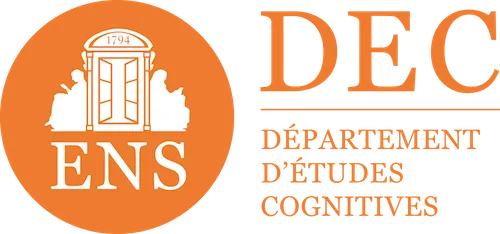

What does pedagogical effectiveness mean?
Educational effectiveness is a priority for anyone in charge of training. But what is pedagogical effectiveness really?
“Our training courses are the most effective in the world”, “Thanks to our solution, your employees learn more effectively”... Educational effectiveness is now on all advertising brochures for training offers. And we understand it well: who does not want to offer their employees the most suitable training courses? But as a result of being used, this term has partly lost its meaning... So let's take a look at what pedagogical effectiveness really is, and why it should be the number one objective in your training strategy.
The 3 dimensions of pedagogical effectiveness
First of all, it is important to know that educational effectiveness is not a unique quantity. Scientific research generally separates it into 3 dimensions: The progress, Retention and The transfer, and which correspond to 3 distinct cognitive challenges.
The progress is the magnitude of the increase in competence following apprenticeship. For example, at the end of a training course on VAT, it is obvious that I am much less wrong when I have to determine whether VAT is deductible for a particular type of transaction. For the same duration of training, the best designed content should allow a greater improvement in performance than the others.
To estimate this magnitude, you must offer employees an evaluation of their skills. front and thereafter the training and then compare their scores.
Retention is the maintenance of the rise in competence over time. Over time, a mechanism of forgetting naturally takes place, which means that we are less and less efficient at mobilizing the skill we have just acquired. The most effective training courses are those with the most lasting benefits.
To estimate the duration of retention, you need to compare the performance of your employees. immediately afterwards A training with those A week, a month, or a year later.
The transfer is the ability of the learner to mobilize a skill in new situations. The more the context is different from the one in which the skill was developed, the more difficult it is to mobilize it. So, if I have only learned to detect conflicts of interest from the perspective of a service provider, I will probably have a harder time detecting those same conflicts of interest from the perspective of the buyer. This gap between the learning context and the mobilization context is called transfer distance.
To measure the transfer distance, you should choose in advance different contexts in which you want your employees to be able to put the acquired skills into practice, then assess their comparative performance in these different contexts.
Obviously, these three dimensions are not completely independent of one another - the formations that induce the greatest progress are generally the best retained and the best used to solve new problems - but they correspond to different cognitive challenges, and that we can therefore work differently. At Didask for example, our solution generates training patterns that adapt to these cognitive challenges, and we will not work on memorizing information in the same way as on implementing learned concepts or deconstructing erroneous representations.
You will notice that at no point did we talk about learner satisfaction. While this is indeed essential, it is not always linked to pedagogical effectiveness. Some interventions can even be very appreciated by The learners while being very inefficient (Ly, Maurin and Riegert, 2020). Thus, if you want to offer effective AND satisfactory training courses, you should not confuse these two aspects and evaluate them separately.
Why are we looking for efficiency?

On an equivalent subject, the most effective training courses induce, for the same period of training, a greater increase in competence, better sustainability and a transfer to a greater number of new situations. When designing your training strategy, you often make the mistake of focusing only on the extent of skills development. However, each of the 3 dimensions of educational effectiveness generates savings, and at several levels.
First of all, effective training reduce the time spent in training. Indeed, your employees will take less time to reach a specific progress objective (“I want my employees to be able to use Salesforce”). What required a full day of training to be assimilated may only take half a day.
Be careful, however: while effective training makes it possible to achieve the same educational objective in a shorter period of time, this does not mean that a shorter course is a more effective course. Short courses are not necessarily a guarantee of quality: everything depends on the complexity of the subject being treated. One could think of quantum physics, which is difficult to learn on your phone in 5 minutes a day...
Then, since effective training transmits more sustainable skills, your employees will be able to link what they have learned to the new learning they will do later. Let's imagine that a person trained in the basics of computer security follows a training course a few months later to better understand the challenges of artificial intelligence: if their first training was effective, we assume that they will be able to more easily identify computer security risks related to artificial intelligence. The new skills developed in this way will be all the richer.
Finally, effective training does not give your employees simple theoretical elements but allows them to apply to field problems. Thus, well-trained salespeople who are well-trained in negotiation will not only retain a set of principles as the best alternative, but will also be able to use them in ongoing negotiations to achieve better results. More efficient and better equipped to deal with the problems they need to solve, they will be more productive, which will create a benefit for them as well as for the company.
How to achieve pedagogical effectiveness?
Many researchers have asked themselves this question. Several elements to be integrated directly into your training courses increase their pedagogical effectiveness. (see for example our articles on Testing And the Spacing). However, these recommendations remain very general and work needs to be done to translate them into practical recommendations. A “global” good practice would therefore be to start by identifying the cognitive issues in question (memorizing? Know how to apply? etc) to set up a system with educational formats adapted to these challenges.
In addition, an evaluation process, to validate the choices that have been made and to guide your training strategy, is also very relevant and we explain this to you in our dedicated article “Educational effectiveness: measuring it, yes but how?”.
Make an appointment directly with our eLearning experts for a demo or simply more information.














